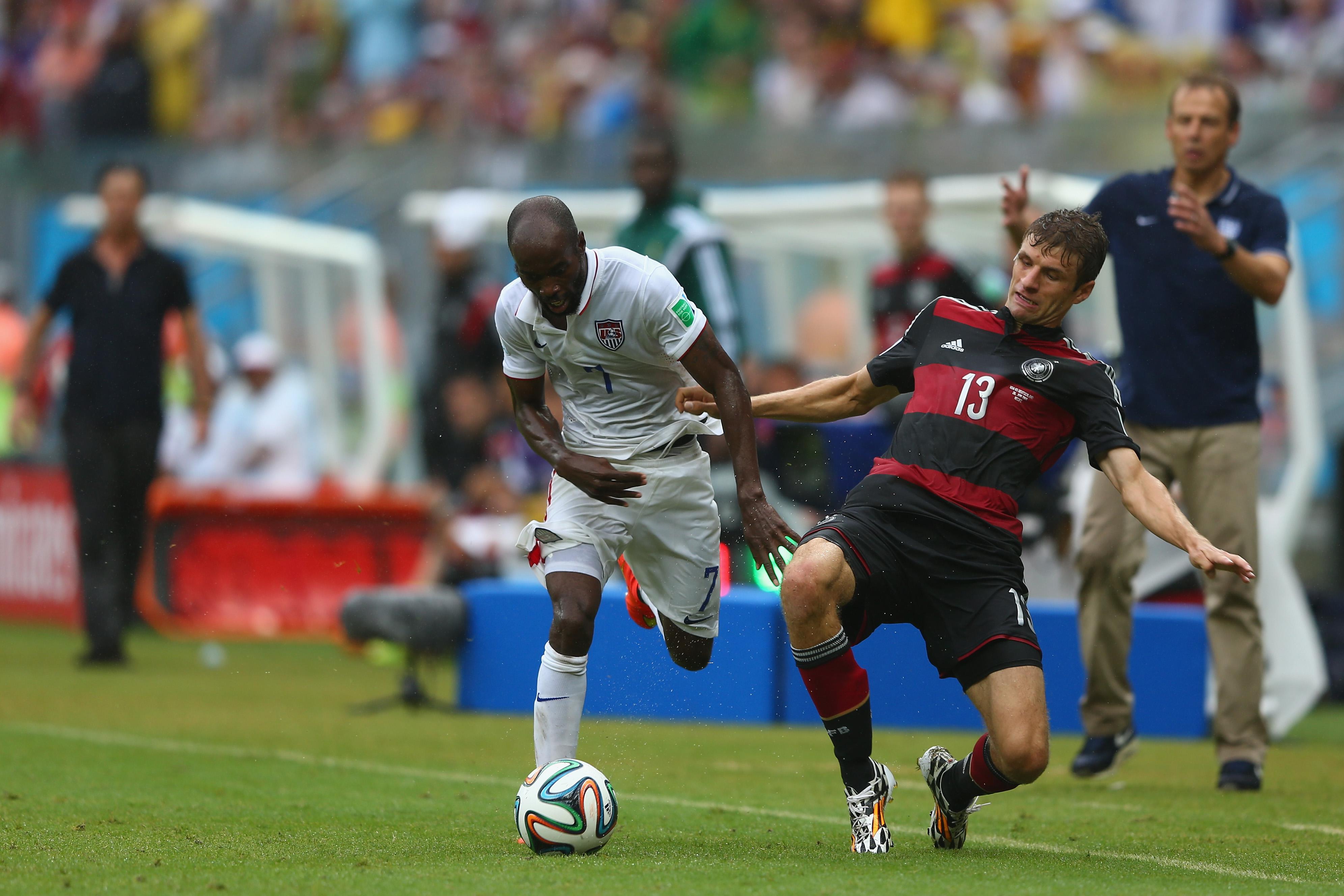The 2014 World Cup is chockablock with numbers. From shots on goal to completed passes to distance run, it’s now possible to glean an incredible amount of detailed information about each team’s performance. While many of these statistics are quite straightforward, others may not mean what you think they do.
Consider possession, a number that’s displayed regularly during ESPN’s World Cup broadcasts. What does it mean to possess the ball? In a sport like American football, the answer is obvious. A team has possession when its offense is on the field. But soccer is different. Chris Anderson, co-author of the excellent The Numbers Game, explains that the player in control is simply “temporarily closer to the ball than the other guy.” The inherent trickiness of measuring control under such circumstances means that possession statistics can vary widely. Depending on whom you ask, Germany outpossessed the U.S. on Thursday 63 percent to 37 percent or 68 percent to 33 percent (let’s assume there’s rounding involved in those latter figures).*
Possession is typically used as a proxy to measure dominance. In theory, the team that has the ball the most dictates the flow of the match and creates more opportunities to score. Spain’s rapid exit from this World Cup, though, shows that completing more passes than anyone else doesn’t matter much if you can’t put the ball in the net.
So, how do you figure out who has the ball? The numbers that ESPN viewers (and viewers elsewhere around the world) see during live World Cup broadcasts come from Deltatre, a “sports media services” company that has been under contract with FIFA since 2002. Deltatre uses a “chess clock” method of calculating possession. They have someone at every game who’s armed with a three-button timing mechanism. One button corresponds to Team A having possession, a second corresponds to Team B having possession, and a third is pressed when the ball is out of play.
To supplement this manual recordkeeping, Deltatre uses an optical tracking system that collects positional data. This allows them to derive additional statistics, such as how often each team has the ball in the opponent’s box.
It is obviously difficult for a single person to see everything that happens in a match, hit the buttons correctly, and make consistent calls when the ball does not clearly belong to a particular team. To minimize human error, data house Opta Sports, which provides soccer data for the Premier League, uses a different approach: an algorithmic method that has nothing at all to do with time.
Opta analysts use software overlaid on live video feeds to track the number of completed passes for each team, with every logged event having both a time code and an X-Y coordinate. Opta then calculates possession as follows:
Possession for Team A = Number of completed passes made by Team A / Total number of completed passes by both teams
Using the Opta method, a team that passes rapidly and successfully (like Spain) may have a higher possession percentage than the chess clock would indicate. Opta argues, however, that in its own tests its passing-based figures correlate closely with the results from a traditional timing method.
When you compare the numbers between Opta and Deltatre, the biggest disparity comes exactly where you’d expect. Opta reports that pass-happy Spain had 64 percent of the possession against the Netherlands; Deltatre has Spain’s possession at 57 percent. In the match against Chile, Opta had Spain at 63 percent vs. 56 percent according to Deltatre. In the USA-Germany game, it was Opta that claimed the Germans had 68 percent possession while Deltatre said it was 63 percent. But in other matches, the possession figures are closer: Both services reported that the USA had 48 percent of the possession compared with 52 percent for Portugal.
The subjective stat of possession isn’t the only place where Opta and Deltatre differ. Opta reports that the Germans completed 686 passes against the Americans, the most of any team during the group stage, while the U.S. completed just 297. Deltatre—and thus the official FIFA stats—reports that the Germans completed 725 passes while the U.S. completed 363.
Still, it’s worth parsing the differences between these approaches to possession because they each represent a different notion of control. In 2011, a frustrated writer for Pro Soccer Talk went so far as to say that “Opta’s possession stat shouldn’t be cited in reporting, and if it is, the word ‘possession’ shouldn’t be used to describe it.”
But if possession is a measure of dominance, then the Opta method makes the most sense. A goalkeeper who holds the ball for four seconds may help his team’s possession percentage, but his team gains nothing from that time.
Soccer is a game of passing, with individual soccer players on average spending less than a second touching the ball. Perhaps, then, we should call possession something else—Anderson suggests “pass volume” or “dominance.” And in the meantime, you should know that possession is a subjective statistic, one that reflects how you look at the game. What does control mean in soccer? Is it about time, or is it about kicking the ball back and forth to your teammates? Whatever your answer, there’s a possession stat for you.
*Correction, June 27, 2014: This post originally misstated the day of the week of the USA-Germany World Cup match. It was Thursday, not Monday.
